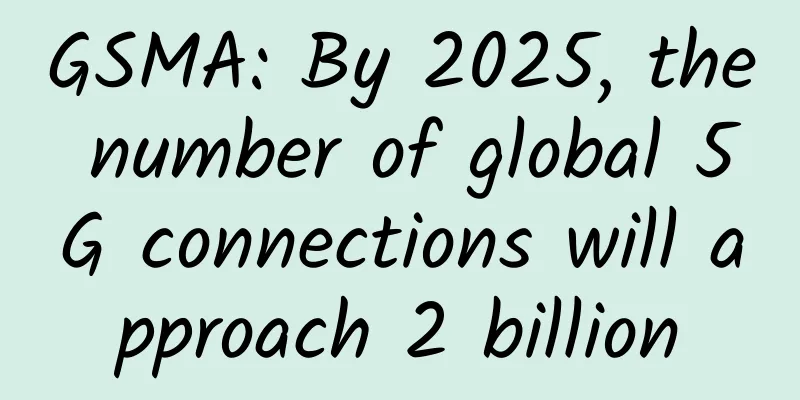5G edge computing is here, it will make supercomputers ubiquitous

|
AT&T was the first to propose the concept of "edge computing", the main purpose of which is to solve the problem of network delay in future 5G applications, such as driverless cars, robots, virtual reality/augmented reality (VR/AR), etc. The increasing popularity of the Internet of Things (IoT) and the Internet of Everything (IoE) is expected to bring edge computing into people's lives in the next few years. According to Cisco data, the number of devices connected to the Internet has increased from 500 million in 2003 to 12.5 billion in 2013, and it is expected that by 2020, this number will exceed 50 billion.
The number of IoT devices is growing rapidly The market value of the Internet of Everything will reach 19 trillion US dollars, forcing communication operators to rethink and redesign their network architecture. In the 5G edge computing era, data centers will cease to exist and become an outdated concept in technology. From data flow, bandwidth to network latency, in the near future, traditional data center-based computing will not be able to meet the needs of the Internet of Everything. The increase in the number of connected electronic products and the growth of big data will bring great pressure to data storage and processing capabilities, and the current data center model cannot provide support. New communication model Therefore, it is necessary to completely transform the network architecture, that is, to transform from a cloud-based system to a distributed edge network structure, or "edge computing". 5G will enable edge computing, and edge computing will become the core of the Internet of Things. Ericsson pointed out in its annual mobility report that by 2020, 5G mobile network users will account for 15% of the world's population, and 5G will connect everything from smart home appliances to smart city solutions. U.S. communication operators have keenly captured this opportunity and have increased their investment in 5G edge computing. Last year, AT&T, Ericsson, and Intel conducted the world's first professional 5G trial. Last month, the three companies conducted a second trial to test live pay TV programs over a 5G network, with a network speed of 1 gigabit per second! Edge computing AT&T said that once 5G edge computing is realized, it will bring us only "network latency in milliseconds", which makes real-time processing of big data possible. Instead of being in the cloud, data will be processed at the “edge” of the network (e.g., in countless offices and companies), which will reduce the pressure of data on network traffic, speed up data analysis processing, and reduce network latency. 5G edge computing will enable robots, self-driving cars, wearable devices, drones and other systems that are sensitive to network latency, such as VR/AR, to become a micro data center themselves. Soon, an era will come where supercomputers are everywhere. |
<<: Developing 5G communications requires testing first
Recommend
10 ways to improve Wi-Fi signal when surfing the Internet
[[265727]] Slower browsing speeds, no streaming, ...
Intelligent mining is an inevitable trend, and 5G commercialization has achieved remarkable results
At present, despite the rapid rise of new energy ...
How to design a powerful API interface
[[343143]] In daily development, we always come i...
If you are in the communications industry, you will be out if you don’t understand these nine 5G issues
China's 5G era has arrived as promised! The f...
IPv6 global penetration rate reaches 27%, 6G will be deployed in 2030
Recently, Latif Ladid, chairman of the National I...
The world's first! H3C is the first to pass the "IPv6+Ready 2.0 & SRv6 Ready" certification
Recently, several high-end core routers and WAN c...
Learn Network TCP/IP Protocol Stack
[[409633]] This article is reprinted from the WeC...
DotdotNetwork: $19/month - 2 cores, 16G memory, 30G SSD, 4TB/10Gbps bandwidth, Los Angeles data center
Recently, I received a submission from DotdotNetw...
IDC: China's network market grew 7.5% year-on-year in 2020, with growth in switches, routers, and WLAN
Recently, IDC released the "2020 Network Mar...
RAKsmart: US VPS starting from $1.99 per month, supports Windows, optional premium network/mainland optimization
I have shared information about RAKsmart many tim...
10gbiz: 50% off, starting from $3.44/month, Hong Kong CN2 GIA/Los Angeles CN2 GIA/AS9929/large hard disk VPS optional
10gbiz is offering a 50% discount on all VPS host...
China's 5G users account for more than 70% of the world's total
The latest data from the Ministry of Industry and...
5G network is accelerating! More than 500,000 5G base stations have been built and put into operation across the country
Since the 13th Five-Year Plan, my country has vig...
Let you understand the MQTT protocol
Author: Wang Yingyue, Unit: China Mobile Smart Ho...









